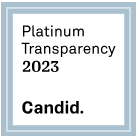We're a Proud Partner of the #MarchForScience!
/The San Diego Hunger Coalition is proud to partner with the March for Science taking place nationwide and here in San Diego on April 22. We rely on science every day in our work to end hunger in our San Diego County through research and evidence-based programs and policy. Our region is home to nearly 500,000 people who are food insecure, meaning they don’t have enough to eat for an active, healthy life. Of these people, nearly 1/3 are children. Without science, we would not know which populations need food assistance, and what are the most effective ways to reach them.
Ways we use science to fight hunger
- We use data from the U.S. Census Bureau’s annual American Community Survey to learn about poverty and federal nutrition program eligibility in San Diego County. Finding out how conditions are changing in our communities helps us to plan and advocate for the needs of people struggling to put food on the table.
- We partnered with the University of California, Los Angeles Center for Health Policy Research to analyze their 2014 and 2015 California Health Interview Survey (CHIS) data to develop the most current and accurate food insecurity rates for San Diego County. In doing so, we can provide an in-depth look at the landscape of hunger and hunger relief services to better understand the types of food assistance available, current gaps and underutilized funding opportunities.
- We worked to integrate food insecurity screenings into healthcare settings in San Diego County by coordinating Rx for CalFresh pilots across six unique healthcare settings and developing a food security and healthcare curriculum in partnership with UC San Diego School of Medicine. Today, healthcare professionals are better equipped to screen for food insecurity and connect people to CalFresh (California’s version of the Supplemental Nutrition Assistance Program formerly known as “food stamps”), one of our nation’s most effective anti-hunger programs.
- We use data and research provided by the U.S. Department of Agriculture to better understand food insecurity throughout the nation and the impacts of federal nutrition programs, such as SNAP and WIC.
- We incorporate data in our advocacy work and meetings with policymakers at the state and federal levels to protect government assistance programs like CalFresh and School Meals. In 2016, our Hunger Advocacy Network secured success for key bills and budget asks to ensure that all people in San Diego have access to enough food for an active, healthy life.
- We use data from the California Department of Education to estimate participation rates in school meal programs at every school district in San Diego County. This lets us identify what’s working and innovative opportunities to feed more children like breakfast in the classroom.
- We analyze data from the CalFresh program to find opportunities to support our CalFresh Task Force’s work to increase efficiency and effectiveness so all eligible people in need can enroll in the program.
- We share data and learnings with our partners so they can more effectively fulfill their own missions and serve as many hungry people as possible.
We use science to measure our impact and identify places to course correct when needed. It allows our work to be efficient, grounded, fundable, and ultimately truly effective. Join us in supporting science on April 22 and register for the San Diego #MarchforScience here. Registering allows the march organizers to update the march logistics and programming as well as keep track of overall attendance and collect basic, useful information on who is attending so they can tell the story about this march when it is over.
Join the March for Science San Diego's Facebook event page to get the latest information and resources leading up to and after the march.
Unable to attend the #MarchonScience? Donate to support the costs for day-of-logistics, technology, outreach and operations for the march.
To directly support the San Diego Hunger Coalition's work to end hunger in San Diego County donate here.





